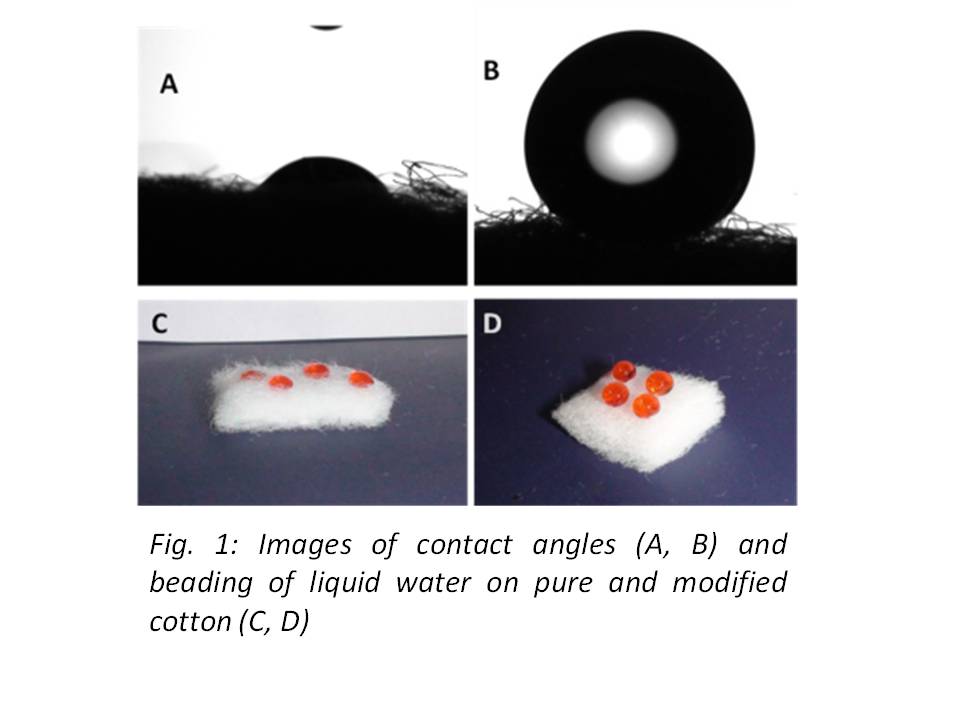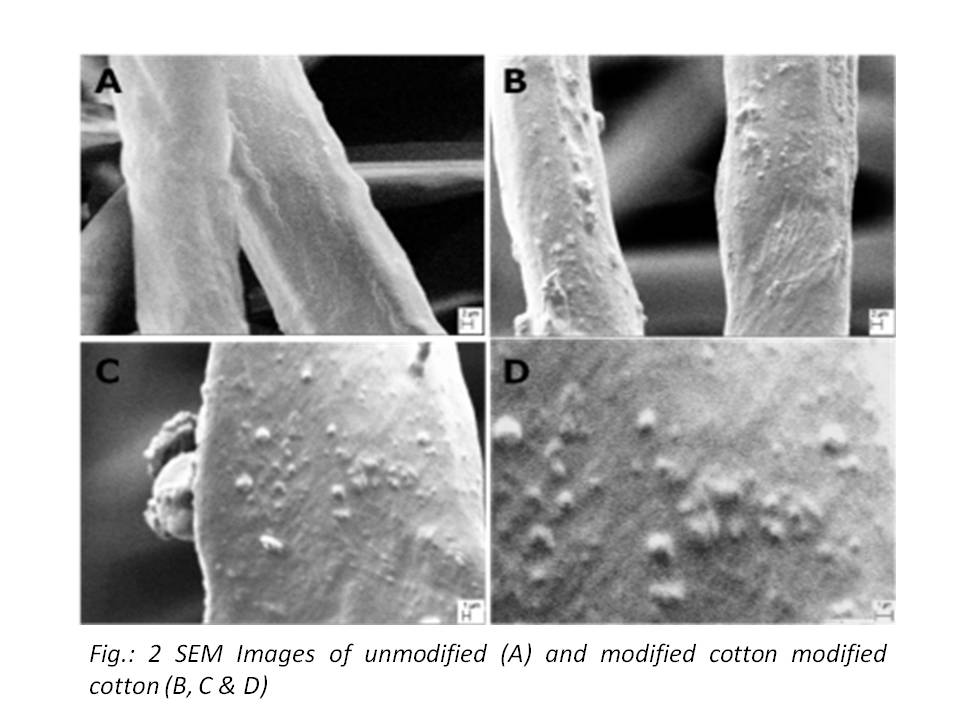Superhydrophobic cotton: A new material with multiple potential applications
SUBHENDU RAY CHOWDHURY1, ATANU JHA1, HARISH JAGAT PANT1.
1Isotope and Radiation Application Division, Radiochemistry and Isotope Group , Bhabha Atomic Research Centre Mumbai, Mumbai, India
Abstract: Materials with superwetting surface have been found to be useful in modulating protein adsorption, cell proliferation, platelet adhesion, bacterial adhesion, etc. These materials are also useful in other biomedical applications as controlled drug delivery agent, diagnostic tool, biosensor, medical textile, etc1,2. In the present study, cotton, which is abundant, porous, cheap and biodegradable has been selected as base material for modification into a superwettable cotton. Natural hydrophilic cotton is modified to a superhydrophobic material using radiation technology (gamma as well as electron beam) and submicron-scale surface engineering. In the synthesis process, isodecyl methacrylate (IDM) is dispersed into aqueous-ethanol solution followed by formation of ultrasonic wave assisted IDM agglomerates, which are deposited onto cotton microfibers with special topography. In this condition IDM molecules are covalently attached by onto cotton microfibers keeping under same solution, thus fixing the developed morphology by radiation assisted grafting. The cotton sample is then washed by ethyl acetate and dried at 60-700C for 4-5 hrs. The washed cotton becomes superhydrophobic and superoleophilic in nature (Fig. 1). In SEMs it is seen that submicron scale roughness is generated and the surface energy is reduced due to IDM attachment (Fig. 2). Because of the combination of these two parameters the surface becomes super-hydrophobic3. The developed superhydrophobic cotton can be a potential material for biomedical applications.


References:
1. Yao, Xi., Song, Y., Jiang, L., Adv. Mater. 23 (2011) 719–734.
2. Lima, A.C., Mano, J.F., Nanomedicine (Lond.) 10 (2015) 271–297.
3. Gao, X. F., Jiang, L., Nature, 432 (2004) 36.